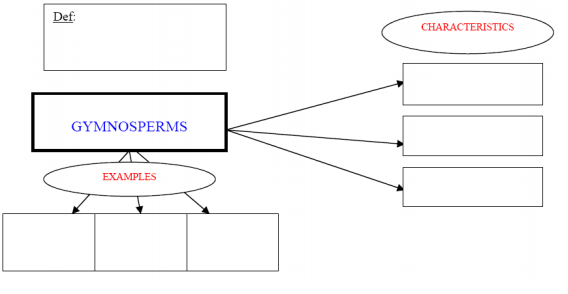Reference no: EM13835758
Part A
1. All modern terrestrial plants are the descendants of _____________?
2. What are the adaptations that these primitive plants need to survive on land?
3. What are the four major groups of plants?
4. List 3 characteristics of each major plant group.
5. List the steps of the conifer life cycle in order.
6. List the divisions of the gymnosperm.
7. List the steps of the angiosperm life cycle in order
8. Fill in the blanks:
The outermost layer of a flower is made of ________, which protect the flower. Just inside the outermost layer is another layer of modified leaves called _________, which can be brightly colored to attract pollinators. Most flowers have both male and female structures. A ___________ is the male structure of a flower and it has a stalk called a____________. This stalk supports an_________, which produces the male gametophytes: ___________. The innermost part of the flower is the female structure called the__________. Each female structure has three parts. The __________is the top part that is sticky and holds the pollen grains when they land there. The ___________is the tube that leads from the top part of the carpel to the base of the flower. This is called the__________, and it is where female gametophytes (eggs/ovules) are produced.
Part B
1. True and False:
(1) Gymnosperm mean naked seed.
(2) Cherry blossom trees are gymnosperms.
(3) Ginkgo trees are gymnosperms.
(4) Palm trees are gymnosperms.
(5) Pine trees are gymnosperms.
(6) Ferns are gymnosperms.
(7) Angiosperms evolved before gymnosperms.
(8) Conifers means covered seed.
(9) Ginkgo trees are monoecious.
(10) Cycads are early palm trees.
(11) Cycads are mostly found in tropical regions.
(12) Cycads are more prevalent today than in the past.
(13) Gymnosperms are vascular plants.
(14) In conifers, male cones are usually smaller than female.
(15) Most conifers are dioecious.
(16) Conifers usually rely on wind for pollination.
(17) In gymnosperms, the sporophyte generation is the plant.
(18) The ginkgo fruit produces a pleasant odour.
2. Fill in the following concept map about gymnosperms

3. In the following table state how gymnosperms are adapted for living on land with respects to each of the following aspects Aspect Adaptation for living on land Alternation of Generation Needles Seeds Pollen Vascular Tissue\
4. What are two important things we use gymnosperms for?
5. The seed of a gymnosperm seed is made in the ______________ .
6. How are the reproductive structures of a typical gymnosperm and a typical angiosperm tree different from each other. Use the venn diagram below to explain. Placing at least one point in each space

7. How are the seeds of angiosperms different from those of gymnosperms?
8. What is an angiosperm?
9. The flower attaches to what part of the plant?
10. Why are flowers brightly colored?
11. Name two mammals that might pollinate a plant.
12. If the petals of a flower are reduced or absent, how is the plant pollinated?
13. The female reproductive structures are called the:
14. Name the three parts of the pistil:
15. Where are the ovules stored?
16. Name the two parts of the stamen:
17. The ovary develops into what structure?
18. Define fruit.
19. Some flowers are not brightly colored at all, but have a very pungent odor that smells like rotting meat. How do you think these flowers are pollinated?
20. In many flowers, the pistils and stamens reach maturity at different times. Considering what you know about pollination, why would this be an advantage to the plant?